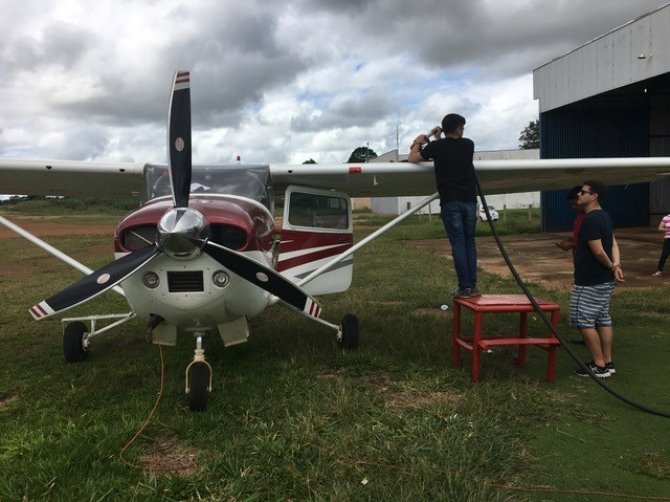
News
Decline in carbon uptake Southeast Amazon
The capacity of the Amazon rainforest to take up CO₂ from the atmosphere is declining. Repeated measurements of carbon dioxide (CO₂) and carbon monoxide (CO, emitted from fires) show that the eastern part releases more CO₂ than it absorbs, while the western part remains a small sink for atmospheric CO₂. This is due to the combination of global warming and deforestation, which has especially hit the eastern part of the Amazon basin hard in the past decade.
Professor Wouter Peters of Wageningen University & Research was part of the research team that collected and analysed close to a thousand air samples from light aircrafts over the rainforest. This created a unique view of carbon exchange across the whole basin. The results caught the researchers by surprise.
The peak in warming, drying, and loss of carbon uptake on the eastern borders of Amazonia is really worrisome
They found an unexpectedly larger climate change in the east, with temperatures increased by close to four times the global average warming of the past 40 years. This went along with a loss of nearly one-third of the rainfall during the – already very hot – dry season that occurs every year in Aug-Sep-Oct. "The rates of warming in the eastern dry season and the accompanying reduction in rainfall really suggests a change in the tropical water cycle," says Peters.
Amazon fires
During this dry season, widespread fires occurred in Brazil. These fires are used to deforest large areas and create new agricultural land. This practice itself makes the eastern area more vulnerable to drought and leads to increased forest mortality. It also creates a circle of increasing degradation of the ecosystems that the authors speculate to feedback on regional warming and further drying.

"The peak in warming, drying, and loss of carbon uptake on the eastern borders of Amazonia is really worrisome," says Peters, "this is exactly the region where biomass burning and deforestation has started to increase again in recent years due to a lack of protection, but also due to the increase in dryness itself. This is a dangerous circle that needs to be broken."
West remains carbon sink
The western part of the Amazon is more pristine, with less (but also increasing) human influence and also a less intense dry season than the eastern part. The aircraft measurements show a much smaller influence of fires on the atmosphere and a carbon balance in which the forest still takes up a little bit of CO₂ each year. That is despite global warming that is also affecting this part of the Amazon.
This east-west difference in the response of the rainforest to climate change is an important discovery that still needs to be better understood. This includes fragmentation of the forest due to human land-use change and a loss of the forest's so-called resilience due to a surprising sequence of intense droughts that struck the area in the past decade. Such processes still need to find a place in climate models and allow us to assess how much CO₂ the rainforest will add to or remove from our atmosphere in the next decades.
Aerial measurements
Peters emphasises the need to continue measuring. "The aircraft program from which the basin-wide carbon balance is monitored gives a unique view that has proven, once more, to give really valuable information on the Amazon rainforest and its response to ongoing warming and deforestation.